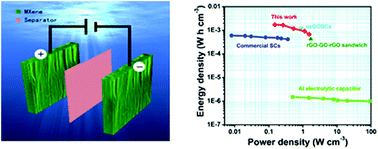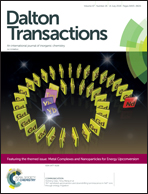Seawater electrolyte-mediated high volumetric MXene-based electrochemical symmetric supercapacitors
Abstract
The structure and morphology of titanium carbide (Ti3C2Tx) MXene, a new class of two dimensional (2D) materials, are investigated and reported. Ti3AlC2 MAX, treated with a hydrofluoric acid etching process, is used as a promising electrode material for electrochemical supercapacitor studies. The electrochemical supercapacitor performance of Ti3C2Tx as a negatrode in a natural seawater electrolyte solution, tested in a three-electrode system, demonstrated a specific capacitance of 67.7 F g−1 at a current density of 1 A g−1 which is in accordance with the volumetric specific capacitance of 121.8 F cm−3. A symmetric supercapacitor assembled with a Ti3C2Tx//Ti3C2Tx electrode configuration revealed a volumetric specific capacitance of 27.4 F cm−3 at 0.25 A g−1, and 96.6% capacitance retention even after 5000 cycles, which is superior to those reported previously in similar systems, suggesting the importance of abundant and cost-effective seawater as a natural electrolyte in developing energy storage devices.



 Please wait while we load your content...
Please wait while we load your content...